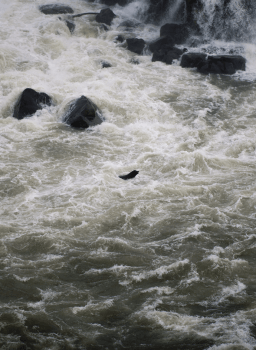Sallie Tisdale at Harper’s Magazine:
 In 1974, after protracted legal efforts and sometimes violent protests, a US district court in Washington State upheld the treaties of the Columbia Plateau tribes. Known as the Boldt Decision, the ruling upended the fishing industry and still angers non-Indian fishermen. It gave tribal members the right to half of the river’s harvestable fish, and it was upheld by the Supreme Court in 1979. (The number considered harvestable varies. Fishery managers meet throughout the year to set limits that will allow weak populations to rebound and tributary stocks to spawn, but the shares are always kept equal between treaty and non-treaty fishers.) The tribes also have access to thirty-one fishing sites closed to others. A long stretch of the lower river is now divided into six fishing zones. The first five zones are in the 145 miles between the mouth of the Columbia and Bonneville Dam. Zone 6 runs above Bonneville for another 147 miles, and commercial fishing can only be done by the tribes there. The Boldt Decision affirmed the right to fish—but it didn’t bring back the fish. It did nothing to mitigate the desperate losses caused by dams, development, and overfishing. By 1995, there were about 750,000 salmon left in the entire Columbia River.
In 1974, after protracted legal efforts and sometimes violent protests, a US district court in Washington State upheld the treaties of the Columbia Plateau tribes. Known as the Boldt Decision, the ruling upended the fishing industry and still angers non-Indian fishermen. It gave tribal members the right to half of the river’s harvestable fish, and it was upheld by the Supreme Court in 1979. (The number considered harvestable varies. Fishery managers meet throughout the year to set limits that will allow weak populations to rebound and tributary stocks to spawn, but the shares are always kept equal between treaty and non-treaty fishers.) The tribes also have access to thirty-one fishing sites closed to others. A long stretch of the lower river is now divided into six fishing zones. The first five zones are in the 145 miles between the mouth of the Columbia and Bonneville Dam. Zone 6 runs above Bonneville for another 147 miles, and commercial fishing can only be done by the tribes there. The Boldt Decision affirmed the right to fish—but it didn’t bring back the fish. It did nothing to mitigate the desperate losses caused by dams, development, and overfishing. By 1995, there were about 750,000 salmon left in the entire Columbia River.
more here.
